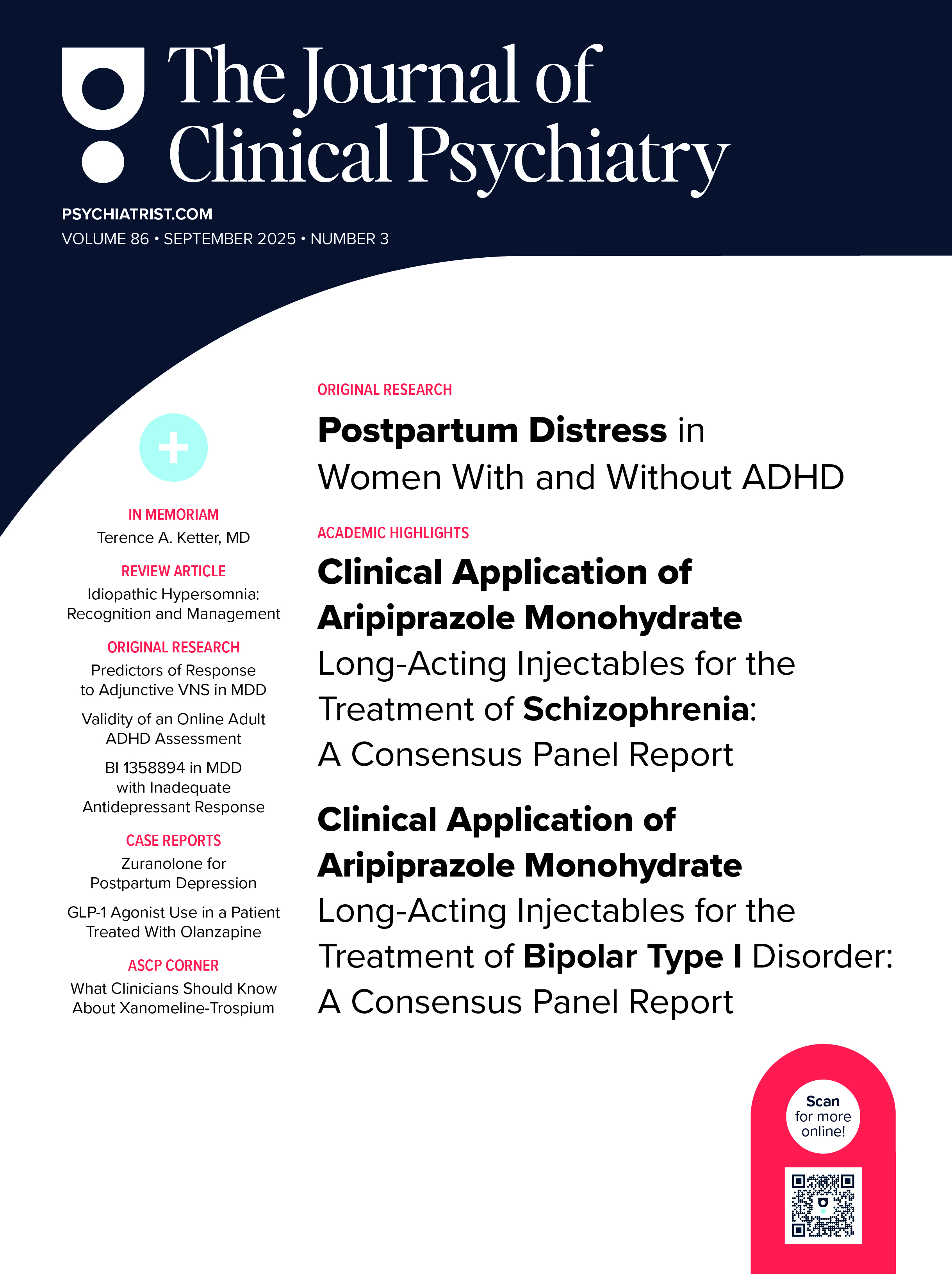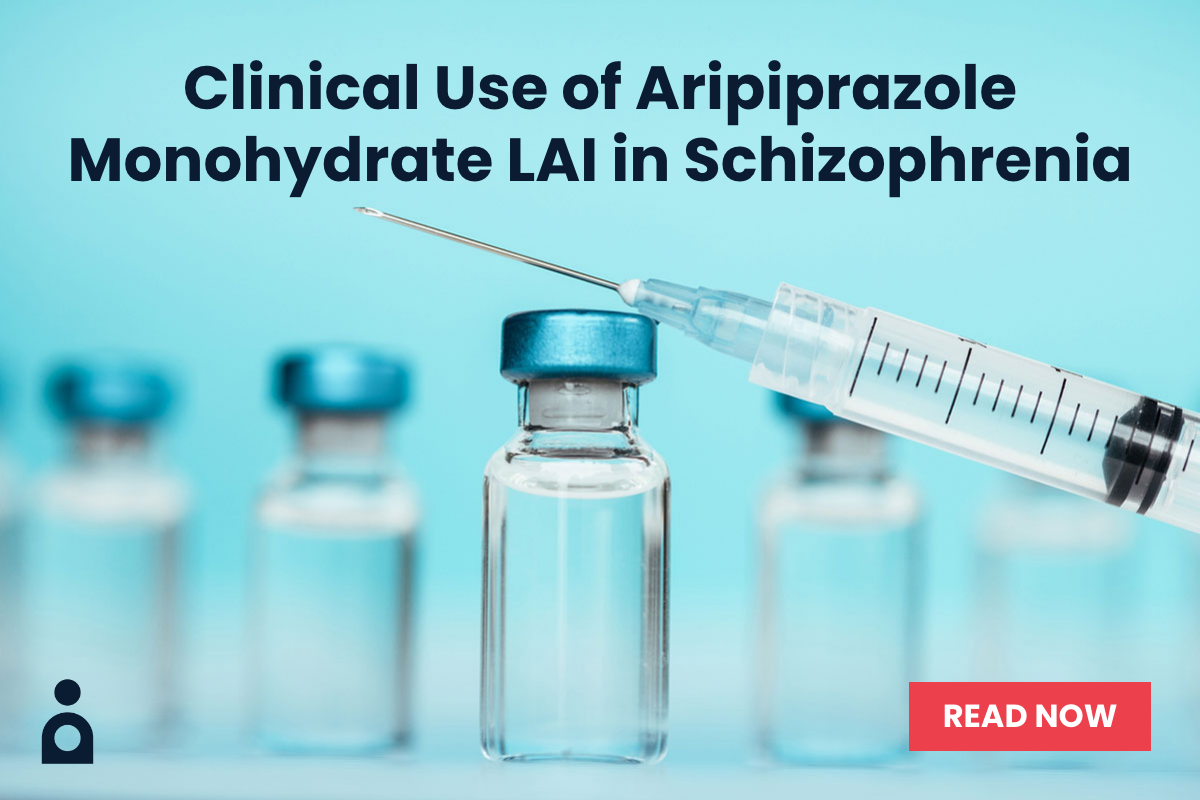ABSTRACT
Objective: To evaluate national trends in incident varenicline and nicotine replacement therapy (NRT) prescribing among Department of Veterans Affairs (VA) beneficiaries before and after US Food and Drug Administration (FDA) warnings regarding neuropsychiatric side effects with varenicline use.
Methods: All adult VA patients identified as smokers from 2007 to 2019 (N = 3,600,947) were determined and monthly counts of new varenicline and NRT users were calculated. An interrupted time-series analysis estimated the effect of the FDA warnings on varenicline and NRT prescribing overall and among Veterans with and without mental health disorders.
Results: The incident use rate of varenicline decreased from a peak of 6.2 per 1,000 veteran smokers in October 2007 to 1.0 by July 2009 following the first FDA warning (pre-warning monthly slope = −0.27; P = .03). New NRT use increased from 10.7 per 1,000 veteran smokers in October 2007 to a peak of 12.6 per 1,000 in July 2009 (slope change = 0.71; P = .01), suggesting potential substitution. Following removal of the FDA boxed warning in December 2016, varenicline prescribing increased but did not return to pre-warning levels by December 2019. Among veterans with and without mental health disorders, varenicline use decreased 90% and 88%, respectively, following the first FDA warning, and both groups had comparable rates of new NRT use.
Conclusions: Following the first FDA warning, incident use of varenicline declined significantly among veterans both with and without mental health disorders. Despite removal of the FDA boxed warning in December 2016, new use of varenicline had not returned to pre-warning levels 3 years following the removal.
Members Only Content
This full article is available exclusively to Professional tier members. Subscribe now to unlock the HTML version and gain unlimited access to our entire library plus all PDFs. If you’re already a subscriber, please log in below to continue reading.
References (27)

- US Food & Drug Administration. Public Health Advisory: Important Information on Chantix (varenicline). FDA website. http://wayback.archive-it.org/7993/20170112032505/http:/www.fda.gov/Drugs/DrugSafety/PostmarketDrugSafetyInformationforPatientsandProviders/ucm051136.htm. February 2008 (online). Accessed July 1, 2020.
- US Food & Drug Administration. Public Health Advisory: FDA Requires New Boxed Warnings for the Smoking Cessation Drugs Chantix and Zyban. FDA website. http://wayback.archive-it.org/7993/20170112005513/http:/www.fda.gov/Drugs/DrugSafety/PostmarketDrugSafetyInformationforPatientsandProviders/ucm169988.htm. July 2009 (online). Accessed July 1, 2020.
- Meyer TE, Taylor LG, Xie S, et al. Neuropsychiatric events in varenicline and nicotine replacement patch users in the Military Health System. Addiction. 2013;108(1):203–210. PubMed CrossRef
- Pasternak B, Svanström H, Hviid A. Use of varenicline versus bupropion and risk of psychiatric adverse events. Addiction. 2013;108(7):1336–1343. PubMed CrossRef
- Thomas KH, Martin RM, Davies NM, et al. Smoking cessation treatment and risk of depression, suicide, and self harm in the Clinical Practice Research Datalink: prospective cohort study. BMJ. 2013;347(Oct 11):f5704. PubMed CrossRef
- Cunningham FE, Hur K, Dong D, et al. A comparison of neuropsychiatric adverse events during early treatment with varenicline or a nicotine patch. Addiction. 2016;111(7):1283–1292. PubMed CrossRef
- Anthenelli RM, Benowitz NL, West R, et al. Neuropsychiatric safety and efficacy of varenicline, bupropion, and nicotine patch in smokers with and without psychiatric disorders (EAGLES): a double-blind, randomised, placebo-controlled clinical trial. Lancet. 2016;387(10037):2507–2520. PubMed CrossRef
- Peckham E, Brabyn S, Cook L, et al. Smoking cessation in severe mental ill health: what works? an updated systematic review and meta-analysis. BMC Psychiatry. 2017;17(1):252. PubMed CrossRef
- Anthenelli RM, Morris C, Ramey TS, et al. Effects of varenicline on smoking cessation in adults with stably treated current or past major depression: a randomized trial. Ann Intern Med. 2013;159(6):390–400. PubMed CrossRef
- Evins AE, Cather C, Pratt SA, et al. Maintenance treatment with varenicline for smoking cessation in patients with schizophrenia and bipolar disorder: a randomized clinical trial. JAMA. 2014;311(2):145–154. PubMed CrossRef
- US Food & Drug Administration. FDA Drug Safety Communication: FDA revises description of mental health side effects of the stop-smoking medicines Chantix (varenicline) and Zyban (bupropion) to reflect clinical trial findings. FDA website. https://www.fda.gov/drugs/drug-safety-and-availability/fda-drug-safety-communication-fda-revises-description-mental-health-side-effects-stop-smoking. December 2016 (online). Accessed July 3, 2020.
- Shah D, Shah A, Tan X, et al. Trends in utilization of smoking cessation agents before and after the passage of FDA boxed warning in the United States. Drug Alcohol Depend. 2017;177:187–193. PubMed CrossRef
- Desai RJ, Good MM, San-Juan-Rodriguez A, et al. Varenicline and nicotine replacement use associated with US Food and Drug Administration Drug Safety Communications. JAMA Netw Open. 2019;2(9):e1910626. PubMed CrossRef
- Kizer KW, Dudley RA. Extreme makeover: Transformation of the veterans health care system. Annu Rev Public Health. 2009;30(1):313–339. PubMed CrossRef
- Barnett P, Chow A, Flores N. Using tobacco health factors data for VA Health Services Research. Menlo Park, CA: VA Palo Alto;2014.
- McGinnis KA, Brandt CA, Skanderson M, et al. Validating smoking data from the Veteran’s Affairs Health Factors dataset, an electronic data source. Nicotine Tob Res. 2011;13(12):1233–1239. PubMed CrossRef
- Ignacio RV, Barnett PG, Kim HM, et al. Trends and patient characteristics associated with tobacco pharmacotherapy dispensed in the Veterans Health Administration. Nicotine Tob Res. 2018;20(10):1173–1181. PubMed CrossRef
- Dusetzina SB, Higashi AS, Dorsey ER, et al. Impact of FDA drug risk communications on health care utilization and health behaviors: a systematic review. Med Care. 2012;50(6):466–478. PubMed CrossRef
- Gerlach LB, Kim HM, Yosef M, et al. Assessing responsiveness of health systems to drug safety warnings. Am J Geriatr Psychiatry. 2018;26(4):476–483. PubMed CrossRef
- Wagner AK, Chan KA, Dashevsky I, et al. FDA drug prescribing warnings: is the black box half empty or half full? Pharmacoepidemiol Drug Saf. 2006;15(6):369–386. PubMed CrossRef
- Briesacher BA, Soumerai SB, Zhang F, et al. A critical review of methods to evaluate the impact of FDA regulatory actions. Pharmacoepidemiol Drug Saf. 2013;22(9):986–994. PubMed CrossRef
- Sales MM, Cunningham FE, Glassman PA, et al. Pharmacy benefits management in the Veterans Health Administration: 1995 to 2003. Am J Manag Care. 2005;11(2):104–112. PubMed
- Aspinall SL, Sales MM, Good CB, et al. Pharmacy benefits management in the veterans health administration revisited: a decade of advancements, 2004–2014. J Manag Care Spec Pharm. 2016;22(9):1058–1063. PubMed
- VA Center for Medication Safety Tobacco Use Cessation Technical Advisory Group. Varenicline Criteria for Prescribing. https://www.healthquality.va.gov/tuc/VareniclineCriteriaforPrescribing.pdf. Published July 2011. Accessed September 1, 2020.
- Medication Safety in Seconds: A Monthly Publication from VA MedSafe: VA’s Comprehensive Pharmacovigilance Center. Issue 10, Volume 6. VAMedSafe website. https://www.pbm.va.gov/PBM/vacenterformedicationsafety/newsletter/MedicationSafetyinSeconds_NovDec_2016_FINAL.PDF. Accessed June 1, 2021.
- Hickson RP, Cole AL, Dusetzina SB. Implications of Removing Rosiglitazone’s Black Box Warning and Restricted Access Program on the Uptake of Thiazolidinediones and Dipeptidyl Peptidase-4 Inhibitors Among Patients with Type 2 Diabetes. J Manag Care Spec Pharm. 2019;25(1):72–79. PubMed CrossRef
- Prices for smoking cessation drug Chantix increase by 106% in just five years. GoodRx website. https://www.goodrx.com/blog/prices-for-smoking-cessation-drug-chantix-increase-by-106-in-just-five-years/ Published June 25, 2018. Accessed June 1, 2021.




